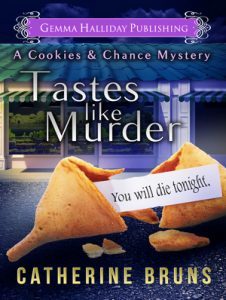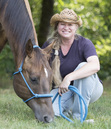Elena Hartwell's Blog, page 72
March 25, 2018
Three Strikes, You’re Dead: Book Three for Eddie Shoes
Next weekend, the third Eddie Shoes Mystery launches into the world. I’m thrilled at the reception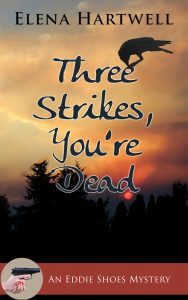 the first two novels have received, garnering excellent reviews and award nominations. I hope the momentum continues.
the first two novels have received, garnering excellent reviews and award nominations. I hope the momentum continues.
These last couple years have been a whirlwind. From landing a book deal with my publisher, to extensive rewriting on the first book, to launching book two, while scrambling to write book three, the series has taken me all around the country. I’ve met some wonderful readers and spent time with fellow authors. It sometimes feels like I haven’t come up for air in about four years, but I wouldn’t change a thing!
Writing is one of those careers I’m not sure you ever really “master.” I’ve listened to a lot of well-established authors during my travels and there are some common threads, even from bestselling novelists. I’ve learned so much, I thought I’d share a couple things with all of you.
Fear of failure never goes away.
Holding the actual, physical book in your hand for the first time is a thrill.
Bad reviews can hurt, even when a book has multiple fantastic ones.
Writing is hard, not writing is harder.
Writing a series has pros and cons. You get to explore characters deeper, but you have to write each book for readers who haven’t read the earlier ones.
Writing standalones has pros and cons. You get to explore new characters with every book, but you are also starting back at square one.
Publicity and Marketing are baffling. Writers aren’t very good at self-promotion.
The business of being a writer is mysterious. No one can say for sure why a book does or doesn’t sell.
Writers, for the most part, are generous with their time, to readers and other writers. The mystery/thriller genre is full of thoughtful, kind, helpful people.
Launching the third book is just as exciting as launching the first.
The industry is always going through changes. From e-books to audio, technology impacts our world. I’m always happy when I hear physical books are still popular. Some research shows an uptick in both paperback and hardback books. I love physical books. I read on an e-reader for convenience. It’s easy to carry on trips, with multiple books in one tiny package. But there is something special about the way a book feels in your hands. The weight of the words. The smell of the paper. The ability to see how far you’ve read and how far you have to go. I hope physical books never disappear from our landscape.
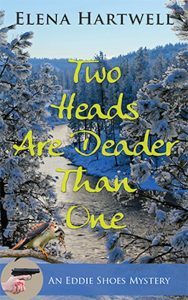 This year, Two Heads are Deader Than One is going to be re-released by Harlequin for their Worldwide Mystery Series. I’m excited about the potential for greater exposure for the series. I’ve been pleased that the first two books in the series are available in e-books and on Audible.
This year, Two Heads are Deader Than One is going to be re-released by Harlequin for their Worldwide Mystery Series. I’m excited about the potential for greater exposure for the series. I’ve been pleased that the first two books in the series are available in e-books and on Audible.
It’s still amazing when I see my covers and name in bookstores and libraries, on websites and in reviews. To say I’m a novelist is a dream come true. Life is tricky and full of surprises and compromises. There are tragedies and moments of grace. Through it all, I’ve been a storyteller. First on the stage and now on the page. I wouldn’t want it any other way.
But I must leave you now … my work in progress awaits … See you at the bookstore!
Click on the links for some lovely reviews for Three Strikes, You’re Dead.
Readers’ Favorite & the San Francisco Review of Books
The post Three Strikes, You’re Dead: Book Three for Eddie Shoes appeared first on Elena Hartwell.
March 18, 2018
Award Winning Author Cynthia Kuhn on Writing the Perfect Cozy
So happy to have fellow mystery author, Cynthia Kuhn visit with us this week! Cynthia and I both launched our first mystery novels in April, 2016. Welcome Cynthia!
The Author
Cynthia Kuhn writes the Lila Maclean Academic Mystery series, which includes 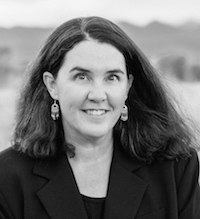 The Semester of Our Discontent, an Agatha Award recipient (Best First Novel), and The Art of Vanishing, a Lefty Award nominee (Best Humorous Mystery).
The Semester of Our Discontent, an Agatha Award recipient (Best First Novel), and The Art of Vanishing, a Lefty Award nominee (Best Humorous Mystery).
The third in the series, The Spirit in Question, is forthcoming fall 2018. She teaches English in Denver, serves as president of Sisters in Crime-Colorado, and blogs with Chicks on the Case. For more information, please visit cynthiakuhn.net.
The Interview
You write a celebrated and award-winning cozy series about an English professor who solves murders in her spare time. What draws you to cozies? What elements should a cozy include or not include?
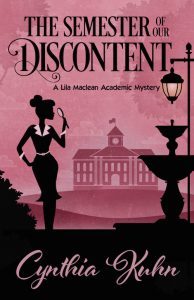
Thank you for letting me visit today—and for that very kind description! What has always drawn me to cozies as a reader is that they’re often humorous and ultimately uplifting: the crime is solved by the end, and justice prevails.
As far as what a cozy should or should not include, that’s debated right along with the meaning of the “cozy” label. True story: I once attended two publisher panels back-to-back at a conference—the first declared that every cozy had to include a recipe or craft project, and the second declared that no cozy had to include a recipe or craft project. I’ve also heard people argue about the necessity of including cats. Jury’s still out on some things, it seems.
But generally speaking, cozies tend to take place in a connected community, keep the sex and violence offstage, and focus on someone who follows clues and exposes secrets (typically, though not always, an amateur sleuth).
Your other job is as a professor of English, just like your protagonist. What are the pros and cons of writing a mystery series with crossover to your “other” life?
One pro is that you’re immersed in the environment and dynamics, which helps you create authentic details for your fictional world. A con is that you must refrain from writing about things that actually happen, even if they would make a great story!
In addition to writing mysteries, you also write literary studies. How does writing fiction versus non-fiction change your process?
They both have the same drafting process, which is to get anything onto the page in order to have something to work with, and the same revising process, which is to rewrite a great deal until a polished manuscript exists. But nonfiction requires more research since I can’t invent things for that (alas).
“I realized that the mystery writing community is a genuinely supportive and generous one.”
As president of the Sisters in Crime-Colorado chapter, along with memberships in a number of other mystery writers organizations, you are very active in the writer community. How does that impact your experience as an author?
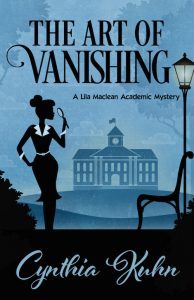
The Lila Maclean series probably wouldn’t have been published if I had not joined groups like Sisters in Crime, Mystery Writers of America, and International Thriller Writers. Conferences like Bouchercon and Malice Domestic have been fantastic as well. I’ve learned so much (and continue to learn) via classes, meetings, panels, workshops, speakers, online conversations, and organization publications.
At the core, the connection with other writers and readers is incredibly inspiring. At first, it surprised me how welcoming everyone was—I couldn’t believe that authors whose books were Actually In Bookstores were even talking to me!—but soon I realized that the mystery writing community is a genuinely supportive and generous one. People help each other, encourage each other, cheer each other on. So grateful to be part of it. It’s like nothing else I’ve ever experienced.
As you get ready to launch the third book in your series, what have you learned over the last couple years about being a series author? Anything you wish you’d known with that first book? Or something you’re really glad you wrote a certain way?
At the beginning, I made a streamlined chart to keep track of characters. But I’ve learned that you must keep more extensive notes about every single character, including the minor ones, because no matter how well you think you know what you wrote in book one, when you’re working on later books, you are not going to remember all the specific details of that character you only mentioned once! (Maybe this doesn’t happen to anyone else. If that’s the case, please don’t tell me.) I’m always amazed at what I DON’T remember about a character. I’m not as organized as you are though, I’m always doing a search in a past manuscript!
What are you working on now?
Finalizing book three in the Lila Maclean series, which was submitted to the publisher in January. Congratulations! So excited for you!
“… never give up!”
Final words of wisdom:
Read widely, write as much as you can, and join a community of people who write the same thing that you do. Also: never give up!
Excellent final words – thank you for joining us!
The post Award Winning Author Cynthia Kuhn on Writing the Perfect Cozy appeared first on Elena Hartwell.
March 11, 2018
Thriller Author Michael Niemann Travels in Africa
I’m thrilled to host author Michael Niemann as my guest blogger this week. Michael’s latest novel, Illegal Holdings, launched March 1, the third in his Vermeulen Thriller Series. Michael uses his real world travels and experience to imbue his fiction with truth. Click here to read more about Illegal Holdings on Alison McMahan’s blog.
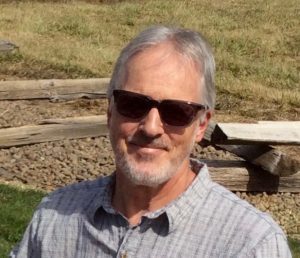 Michael Niemann grew up in a small town in Germany,
Michael Niemann grew up in a small town in Germany,  ten kilometers from the Dutch border. Crossing that border often at a young age sparked in him a curiosity about the larger world. He studied political science at the Rheinische Friedrich-Wilhelms Universität in Bonn and international studies at the University of Denver.
ten kilometers from the Dutch border. Crossing that border often at a young age sparked in him a curiosity about the larger world. He studied political science at the Rheinische Friedrich-Wilhelms Universität in Bonn and international studies at the University of Denver.
During his academic career he focused his work on southern Africa and frequently spent time in the region. After taking a fiction writing course from his friend, the late Fred Pfeil, he switched to mysteries as a different way to write about the world.
Public Transit African Style
The cover of Illegal Holdings shows a busy urban scene from Maputo. A couple of cars, a pickup and a bunch of vans. Those vans are called chapas in Mozambique. The name derives from the Portuguese word for license plate. Chapas are the primary means of urban transport in Mozambique. Today’s vans are mostly Japanese and Korean makes. The drivers ply regular routes, pick up passengers when flagged down and let them off when asked. The fare beats the official buses (where they exist) and certainly the metered cabs tourists take.
My first experience with this means of transport was in Botswana in 1989. I was a poor student doing research and found that the hotel accommodation in Gaborone was scarce and expensive. After asking around, I found that there were cheaper rooms in a suburb called Mogoditshane.
poor student doing research and found that the hotel accommodation in Gaborone was scarce and expensive. After asking around, I found that there were cheaper rooms in a suburb called Mogoditshane.
“How do I get there?” I said, thinking there’d be a bus line. Well, there wasn’t. Instead a friendly soul pointed me to the Broadhurst Combi Terminal near the railway station.
What I found was a huge parking lot filled with combis, that is, minivans. Some of them had signs with their destination, others didn’t. I didn’t see a van headed for Mogoditshane.
So I walked past row after row of minivans asking “Mogoditshane??” Eventually I found the section of the lot where those vans departed. I asked how much and a kid with a cloth bag said some number, I forget how much it was, but it was cheap. I was the third passenger. I settled down in my own row and was ready to depart.
 We didn’t take off for a while. More people climbed in. When all the seats were taken, I was sure we’d be taking off. We didn’t, four riders per row was not full, even though that’s how many seats there were. Now one additional passenger had to squeeze into each row before we took off.
We didn’t take off for a while. More people climbed in. When all the seats were taken, I was sure we’d be taking off. We didn’t, four riders per row was not full, even though that’s how many seats there were. Now one additional passenger had to squeeze into each row before we took off.
Mind you, I had my suitcase with five weeks worth of clothes with me. It was a very tight fit. The ride back was usually not as tight, and eventually I was able to rent a dorm room at the university for a whole lot less, but I’d learned how to use public transport.
Later on that trip, I went to Mozambique. Unfortunately, I didn’t get to use a chapa there. A driver from the university made daily rounds picking up and dropping off visitors. My only public transit experience there was climbing onto the back of a large flatbed truck and holding on for dear life. The money collector, or cobrador, held a piece of rebar and anytime someone wanted to get off, he banged the truck’s cab with it.
Minivan taxis are the preferred means of transport all over the African continent.  They are called twegerane in Rwanda, dala dala in Tanzania, danfo or kia kia in Nigeria, fula fula in the DRC, matatu in Kenya and Uganda and tro tro in Ghana.
They are called twegerane in Rwanda, dala dala in Tanzania, danfo or kia kia in Nigeria, fula fula in the DRC, matatu in Kenya and Uganda and tro tro in Ghana.
The type of minibus may vary, for example, I found that in Pretoria, South Africa, Volkswagen vans were the dominant model (at least in 1999), which surprised me since Japanese makes dominated the streets in Cape Town. The colloquial names either refer to speed, as in “quick quick” or to the fact that there are filled past capacity, as in “stuffed.”
The degree of regulation of these taxi services varies from country to country. In Kenya they are tightly regulated. In South Africa, where minivans were prohibited under apartheid, the industry was deregulated after 1987. The result were loads of not roadworthy vans that were often overloaded. Taking these was risky. Add to that unregulated competition and you had the so called taxi wars. The statistics were gruesome. A report by Jackie Dugard claimed that in 1999 alone, some 258 people were killed and 287 wounded as a result of the violence between rival taxi gangs.
Several countries, including South Africa, have taken steps to impose more regulations on the industry. Still, those vans continues to be the way to get around. I can still hear the touts shouting “Wynberg, Wynberg,” luring passengers for the ride from Cape Town proper to the suburbs of Rondebosch and beyond. It was tight, but cheap.
Photo credits
Taxis in Manzini, Swaziland – Michael Niemann
Dala Dala in Tanzania – Muhammad Mahdi Karim, Creative Commons
Old Taxi Parki in Kampala, Uganda – Albert Backer, Creative Commons
The post Thriller Author Michael Niemann Travels in Africa appeared first on Elena Hartwell.
March 4, 2018
Based on True Crime, One Cozy, One Thriller: Debuts for Every Reader
Three new ITW Debut Authors with their fabulous novels. It gives me great pleasure to introduce you to Cheryl L. Reed, Debra Sennefelder, and Tom Hunt. If you’d like to discover additional debut authors, check out one of my recent posts here.
CHERYL L. REED
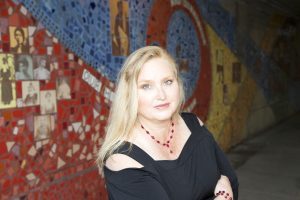 Cheryl L Reed is an author and a journalist. Currently, she’s working on a series of novels set in Chicago. Cheryl has an MFA in fiction writing from Northwestern University.
Cheryl L Reed is an author and a journalist. Currently, she’s working on a series of novels set in Chicago. Cheryl has an MFA in fiction writing from Northwestern University.
She has been a staff reporter and editor at a number of newspapers and magazines, including the Chicago Sun-Times. She lives with her husband, Greg Stricharchuk, a writer and a former editor for the Chicago Tribune, and their two lovely dogs, Graycie and Molly.
You can find Cheryl on Facebook, Instagram, and Twitter
The Interview…
What is one of your favorite elements in your debut novel?
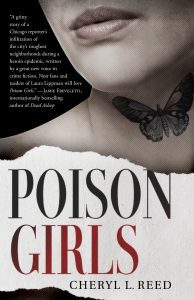
My favorite element in my debut novel, Poison Girls, is that most of the shocking details in the book are all true. The book is based on a real case in which 250 people died from overdoses of fentanyl-laced heroin, including several teenage girls. The book follows the narrative arc of a true case in which I followed teenage girls doing drugs and what happened to them and me.
What led you to writing your first novel?
I am a journalist and my first book, Unveiled: The Hidden Lives of Nuns, was based on four years I spent living off and on with nuns all over the country. I wanted to write another nonfiction book about girls doing drugs, based on my own journalistic experiences, but realized there were too many complications with revealing identities that would compromise the book. I decided then to write a novel. But writing fiction is much harder than I thought. Though I had spent my entire adult life writing for a living, writing fiction required me to break my ingrained habits as a journalist. I had to learn to trust my imagination and to write what I see in my head instead of what I saw as a journalist. All in all, it took 12 years to write (and rewrite and rewrite…) and publish Poison Girls.
What are you working on now?
I am writing a sequel to Poison Girls involving several of the main characters, only this book is told from three first-person points of view. In this book, a black man is accidentally shot by a white woman who knows the police won’t believe her, so she goes on the run. The book trails her as she changes her identity and lives on a remote island near Canada. The other two point-of-view characters are two men chasing her, one is her sort-of boyfriend and the other a man who filmed her shooting the police officer.
DEBRA SENNEFELDER
Debra Sennefelder is an avid reader who reads across a range of genres, but mystery fiction is her obsession. Her interest in people and relationships is channeled into her novels against a backdrop of crime and mystery. When she’s not reading, she enjoys cooking and baking and as a former food blogger, she is constantly taking photographs of her food. Yeah, she’s that person.
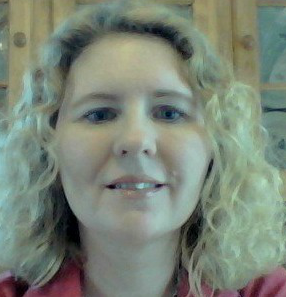 Born and raised in New York City, she now lives in Connecticut with her family. She’s worked in pre-hospital care, retail and publishing. Her writing companions are her adorable and slightly spoiled Shih-Tzus, Susie and Billy.
Born and raised in New York City, she now lives in Connecticut with her family. She’s worked in pre-hospital care, retail and publishing. Her writing companions are her adorable and slightly spoiled Shih-Tzus, Susie and Billy.
She is a member of Sisters in Crime and Romance Writers of America.
She can be reached at Debra@DebraSennefelder.com
You can also find her on Facebook, Instagram, and Amazon
The Uninvited Corpse is her first novel.
The Interview…
What is one of your favorite elements in your debut novel?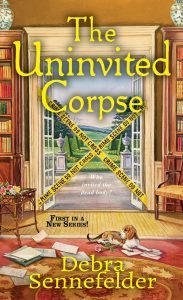
That’s really hard to say. I love all the characters, the scenes, everything. It’s my baby. But since I have to choose, I’d have to say the last chapter is my favorite. It’s in the last chapter where the murder has been wrapped up and the amateur sleuth’s life returns to normal but not quite to what it was because things happened along the way to the ending. It’s hard not to damage some relationships when you suspect someone of murder. At the end of the book Hope reflects on the choices she made that led her back to her hometown and comes to a conclusion of whether it was a bad idea or a good idea.
What led you to writing your first novel?
I honestly don’t remember what gave me the idea to write my very first book, it was so long ago. If we fast forward to spring of 2015, I was writing a romantic suspense novel and something just felt off about the book. About six months earlier I’d shut down my food blog because I wanted to put all my energy into writing fiction. Working full-time, blogging and writing was a lot to juggle so I made the decision to stop blogging. As I was working on the romantic suspense I kept thinking about the cozy mystery I wrote years earlier and discussed it with my critique partner and came to the decision to try writing another cozy mystery and I had the idea of making my sleuth a food blogger, something I knew very well. And, as they say the rest is history.
What are you working on now?
I am writing book three for the Food Blogger Mystery series. Book two, The Hidden Corpse, has already been turned into my publisher and will be released in April 2019.
Tom Hunt
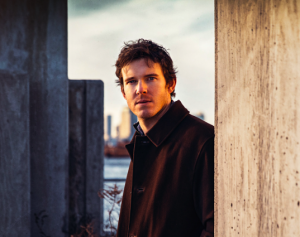
Tom Hunt was born in a small town in Iowa, attended The University of Iowa, and currently lives in New York City. He’s worked as a printer salesman, a hospital administrator, and is currently an award-winning advertising copywriter.
Find more out about Tom by visiting him on social media.
Instagram: @tomhuntwriter
twitter: @tomhuntwriter
Facebook: https://www.facebook.com/TomHuntWriter/
Killer Choice is his debut novel.
The Interview…
What is one of your favorite elements in your debut novel?
The pacing. I tried to write something fast-paced that moves very quickly. I like books with direct writing that zips along.
What led you to writing your first novel?
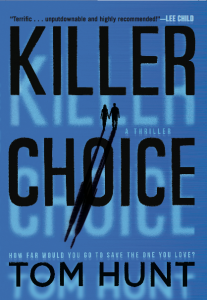 This is the 4th novel I’ve written but the first one that sold. I was stuck in query letter hell for the first three but was lucky enough to find an agent for this one. Even luckier when she sold to book to an amazing editor.
This is the 4th novel I’ve written but the first one that sold. I was stuck in query letter hell for the first three but was lucky enough to find an agent for this one. Even luckier when she sold to book to an amazing editor.
What are you working on now?
Edits to my next book. Another thriller, coming from Penguin in 2019. Can’t give away any plot details yet but I will soon.
Always happy to meet new authors! Looking forward to all your books.

The post Based on True Crime, One Cozy, One Thriller: Debuts for Every Reader appeared first on Elena Hartwell.
February 25, 2018
Richard Helms: Award Winning Mystery Author Chats about Writing
This week we get to hang out with the wonderful and prolific author Richard Helms.
Welcome, Rick!
The Author
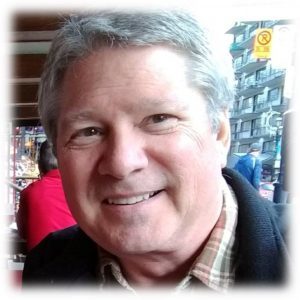
After a twenty year career as a clinical/forensic psychologist, and ten more years as an associate professor of psychology, Richard Helms retired to become a full-time writer in August, 2016. He currently has published eighteen novels, though most are now out of print, but still available as ebooks. He is a frequent contributor of short stories to Ellery Queen Mystery Magazine, and selected anthologies.
He has been nominated six times for the SMFS Derringer Award, with two wins (both in 2008), five times for the PWA Shamus Award, twice for the ITW Thriller Award, with one win (2011), and once for the MRI Macavity Award. He will have an Eamon Gold short story entitled “The King of Gonna” in the May-June issue of EQMM this year, and his newest novel, PAID IN SPADES, featuring his Shamus, Derringer, Macavity, and Thriller Award-nominated New Orleans jazz musician and P.I without portfolio Pat Gallegher, will be published in the summer of 2018 by Clay Stafford Books .
The Interview
You have been a college professor and before that, a forensic psychologist. How did those two careers impact your writing?
They’ve poked their heads into my stories once or twice along the way, but overall, I haven’t written a great deal about them.
I’ve written two novels that centered on forensic psychology. The first, Bobby J. (written in 1994 but not published until 2002) was actually based on my experience as the Supervising Psychologist/Clinical Director in a 24-bed secure facility for the most violent and aggressive teenagers in the state. I did ‘borrow’ a number of events from those seven years—largely unembellished—to flesh out this novel about the impact of a violent assault on a child has on a community of caregivers in an unnamed city. I think this book has been read by, more or less, as many people as I have fingers, and is now out of print. I hope to bring it out as an ebook shortly. My 2012 novel The Unresolved Seventh features a retired forensic psychologist who has Asperger’s Syndrome, and is a pretty realistic representation of forensic psychology in general.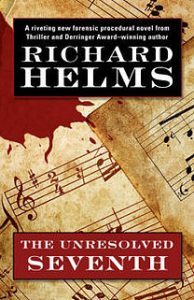
Also, my long-time anchor character, Pat Gallegher, is a retired forensic psychologist and a disgraced college professor, but the resemblance between us is pretty limited.
I recently completed an historical novel entitled VICAR BREKONRIDGE, which is based on the 1843 London trial of Daniel M’Naghten, who murdered Prime Minister Robert Peel’s private secretary Edward Drummond. That trial ended in the declaration of M’Naghten as insane, and it established the M’Naghten Rule for evaluating insanity, which is still used in about half the states in the US, in one form or another, and is still the prevailing standard in the UK. I did my share of competency and insanity evaluations during my clinical career, and some of those experiences were incorporated into this book. I had to be careful, however, because the science of psychology was largely nonexistent in 1843.
Beyond those titles, I don’t think I use my clinical background a great deal. Of course, psychology is the study of, among other things, motivation. I think I probably mine that background to help provide believable motives for my characters, and it helps me to present relationships in a realistic way.
To be perfectly honest, I was never terribly happy as a clinical/forensic psychologist. It was not a career that suited me nearly as well as my college teaching career that followed it. I was much happier in the classroom than I ever was working for the courts. I was probably always better suited to the life of an academic. That may be why I’ve mostly shied away from writing about the clinical life for the most part.
You are a lifelong North Carolinian – how does your geography impact you as a writer
Very strongly. While my best-known early series (Pat Gallegher, Eamon Gold) were  set in New Orleans and San Francisco, beginning with the first book in my Judd Wheeler series Six Mile Creek (2010), most of my stories have been set in either North or South Carolina—and the greater majority of them in a specific county.
set in New Orleans and San Francisco, beginning with the first book in my Judd Wheeler series Six Mile Creek (2010), most of my stories have been set in either North or South Carolina—and the greater majority of them in a specific county.
The Judd Wheeler series is set in a fictional North Carolina town of Prosperity, which looks suspiciously like the town where we lived for 22 years before downsizing in 2015. Prosperity is a small farming community that is being slowly gentrified by tax refugees from the metropolis to the north (Pooler, a substitute for Charlotte), and is one of several towns in fictional Bliss County, including the county seat, Morgan (a thinly veiled Monroe, NC.), Mica Wells (Mineral Springs in real life), Tulip Springs (Waxhaw and Marvin in real life), and Wolfville, which was an actual Union County (NC) town until the beginning of the twentieth century.
After writing the three Judd Wheeler novels (Six Mile Creek, Thunder Moon, and Older Than Goodbye), I began to write other stories situated in the same county. My Bowie Crapster/Boy Boatright series of short stories in Ellery Queen Mystery Magazine are all based in Morgan, as is my recent EQMM story MISSING PERSON. I recently finished the first draft of a massive novel called A KIND AND SAVAGE PLACE, which is sort of a prequel to the Judd Wheeler series, and takes place in Prosperity and Morgan between 1953 and 1989. One of the central characters is Judd Wheeler’s father, Owen, and Judd himself has a couple of cameo appearances as a baby and as a teenager. I’m working on a novel featuring a court psychologist named Nathan Lake that is set in Morgan, but it’s been coming in dribs and drabs for several years. Someday, I’ll settle down  and pound it out.
and pound it out.
I think Bliss County and its environs are becoming my version of Faulkner’s Yoknapatawpha County.
I’ve also recently completed the first title in a new private eye series based in Charleston, SC, where I lived for a while in the early 1980s. I guess I’m just a Carolina boy at heart!
With a wealth of experience to draw on for writing crime novels, how much of what you write is based on actual events and how much is fiction?
As I mentioned earlier, I was poorly suited to a career as a clinical psychologist, but adapted very happily to the academic life. I’ve long thought I should have majored in history instead of psychology in college, but when I went to school there really weren’t many career opportunities for historians outside of academia.
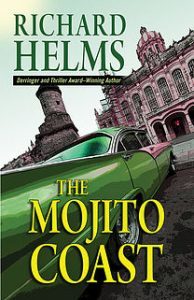 Over the last several years, I’ve slowly gravitated toward writing novels with strong historical spines. The Mojito Coast (a 2014 Shamus Award finalist) was built around the Cuban Revolution. As I mentioned, VICAR BREKONRIDGE (yet to be published) is situated in 1843 London and Glasgow. A KIND AND SAVAGE PLACE (currently in rewrites) uses the huge cultural changes from the 1950s to the 1980s as its foundation. I’m presently building a massive database file that will be used for a purely historical novel I’m planning called CAROLINA, that will cover the history of North and South Carolina from about five hundred years before the arrival of Europeans until the present day. I’ve always been a fan of James Michener, and lately I’ve been reading a lot of Edward Rutherfurd’s historical novels (Paris, Sarum, London, Russia, etc.) I think there will be a lot of Rutherfurd’s influence in CAROLINA, whenever I get around to writing it. I’ve done the genealogies on both sides of my family, and those family histories will probably play a strong role in that novel.
Over the last several years, I’ve slowly gravitated toward writing novels with strong historical spines. The Mojito Coast (a 2014 Shamus Award finalist) was built around the Cuban Revolution. As I mentioned, VICAR BREKONRIDGE (yet to be published) is situated in 1843 London and Glasgow. A KIND AND SAVAGE PLACE (currently in rewrites) uses the huge cultural changes from the 1950s to the 1980s as its foundation. I’m presently building a massive database file that will be used for a purely historical novel I’m planning called CAROLINA, that will cover the history of North and South Carolina from about five hundred years before the arrival of Europeans until the present day. I’ve always been a fan of James Michener, and lately I’ve been reading a lot of Edward Rutherfurd’s historical novels (Paris, Sarum, London, Russia, etc.) I think there will be a lot of Rutherfurd’s influence in CAROLINA, whenever I get around to writing it. I’ve done the genealogies on both sides of my family, and those family histories will probably play a strong role in that novel.
My interest in history motivates me to get details right. In that sense, the non-dramatic details in my books are factually correct (mostly). The rest is completely fictitious (mostly). Like all writers, I have life experiences that I can mine for the bases of my stories, but I try not to be overtly autobiographical. I’m not sure my life is exciting enough for fiction.
…It’s a lot of fun for me. I might tell someone I’m working on a story, and they’ll say, “I can’t wait to read it.” My answer is always, “Neither can I!”
As a prolific author, what’s your writing process like?
I have a pretty regimented writing process. When I retired from teaching, I decided I would attack writing as if it were my actual job—which, when I think about it, it is. I work five days a week, Monday through Friday. I take weekends and holidays off, and I usually take a vacation from writing for a couple of weeks when I finish a book. I’m a pantser, so writing is an exploration for me. I have no idea when I start a novel how it is going to end, or even who the antagonist is. The book evolves as I write based on what the characters want to do. It’s a lot of fun for me. I might tell someone I’m working on a story, and they’ll say, “I can’t wait to read it.” My answer is always, “Neither can I!”
My daily schedule looks a little like this: I wake up around ten in the morning, and spend the rest of the morning reading mail, eating breakfast, reading the news, and taking a walk to get my blood moving. Getting up at ten makes me sound like a lazy bum, but I’m also an inveterate night owl. I seldom get to bed before two in the morning, and often much later. I sleep about the same amount of time as anyone else. My sleep schedule is just different.
I finally settle down to write around 1:00 in the afternoon, and I write until I’ve produced between 2000 and 3000 words. I usually stop between 4:00 and 5:00. From then until dinner, when the weather is nice, I can usually be found on the screened porch, reading. I can generally finish the first draft of a novel in about three months. Sometimes four if it’s a longer work. My work output has increased dramatically since I retired from teaching, so I can usually write two or three novel drafts a year, and four or five short stories.
I alternate between writing first drafts and rewrites. I’m currently writing Novel #23. I finished #22 (HOLY CITY) back in 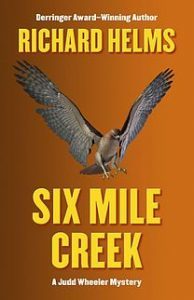 November. When I finish #23, I will pull #22 up and begin rewrites on it. When I finish those, I’ll move on to the first draft of #24, and when it’s done I’ll start rewrites on #23. I’ve found that leaving a novel to ‘cook’ for a few months gives me a fresh perspective on it, and makes the rewriting process easier.
November. When I finish #23, I will pull #22 up and begin rewrites on it. When I finish those, I’ll move on to the first draft of #24, and when it’s done I’ll start rewrites on #23. I’ve found that leaving a novel to ‘cook’ for a few months gives me a fresh perspective on it, and makes the rewriting process easier.
I’m not terribly obsessive-compulsive regarding rewrites. I do go through the first draft first to eliminate unnecessary words (just, that, though, etc.) There are about 40 different words I scan for and try to cut wherever I can to tighten up the manuscript. That’s the really tedious part of rewrites, so I get it out of the way first. For instance, in Novel #22 (A KIND AND SAVAGE PLACE), I had 1547 occurrences of the word ‘that’. Screening, evaluating, and cutting/saving that one word across a 156,000 word manuscript can take a couple of days.
After tightening, which can take a couple of weeks or more, I go through and start cutting unnecessary phrases and sentences, and only then do I start revising the manuscript for flow, continuity, story structure, characterization, pacing, etc, etc, etc.
I might do four or five rewrites before I feel comfortable enough to send it to beta readers, and then there’s another rewrite. Sometimes I use a professional developmental editor to help whip the manuscript into shape, and there will be a rewrite after that as well.
When I start submitting the work, I send it off, forget about it, and start in on the first draft of the next novel, or write a few short stories to gear up for the next novel.
I’ve begun to consider the possibility that I might actually be a short story author who occasionally pops out a novel.
In addition to writing novels, you also write short stories. What draws you to working in both those styles? How do they contrast/compare in terms of process? Any advice for short story writers?
It’s kind of funny. For many years, I claimed that I was incapable of writing short stories. I liked the luxury novels provided to take my time developing characters and conflict and setting and the like. I had written a few short stories, but I was never really happy with them. I considered myself a novelist who occasionally dabbled in short stories.
Since about 2007, I have had ten major mystery award nominations for short stories (with three wins), and only one for a novel. I have been very fortunate to be published regularly in EQMM (thank you, Janet Hutchings!), and I’ve had several stories selected for various anthologies. During that time, I’ve published only five novels, but a couple of dozen short stories. As a result, I’ve begun to consider the possibility that I might actually be a short story author who occasionally pops out a novel.
As far as process is concerned, the work flow is more or less the same. Some stories take longer than others. My most recent story in EQMM (MISSING PERSON) was written in two and a half hours, but I was inspired by a story one of my students had told me. I worked on BUSTING RED HEADS, which appeared in EQMM in 2013, for over a year, off and on. In general, I can do a short story draft in three to five days, depending on length. They tend to take about a week of rewrites, and then I send them out and forget about them while I work on something else.
The biggest difference, obviously, is the economy of words in a short story. I don’t have the luxury of time or huge word counts to do a lot of character development, backstory, or setting embellishments. I have to get right into the action and let the rest go. My average first draft for a short story runs well over 10,000 words, and I spend a lot of rewrite time cutting the extraneous stuff. Most of my EQMM stories have come in at a little over 9000 words, though some—such as MISSING PERSON—are less than 3000 words long. I have an Eamon Gold short story entitled THE KING OF GONNA that will appear in the next EQMM, which I believe came in around 6000 words. That’s not a lot of space for flowery language.
My advice for short story writing is pretty simple. Focus. Maintain one central story line, avoid subplots, and end it as soon as you catch or kill the bad guy. I am a big fan of the Universal horror movies from the 1930s. In those, the hero kills the monster, hugs the girlfriend, and—BANG—right to credits. That’s my model for short stories. Resolve the conflict and write THE END. In novels, I have the luxury of writing a denouement that wraps up all the loose ends. In a short story, there shouldn’t be any loose ends. Think of Poe’s THE CASK OF AMONTILLADO (one of my favorite crime stories). The entire story is about one man killing another in a monstrous way. A single conflict, a single motivation, and a single crime, and the story is done. My story MISSING PERSON was like that. A police detective is called out on a snowy night to investigate a report by a woman that her husband is missing. Within minutes, he figures out why the man isn’t around, he solves the mystery, and rides off into the night. One conflict, one resolution—however poignant it was—and the story is over.
Another piece of advice—not everything you intend to be a novel is really a big enough story to support a novel-length work. A lot of my most successful short stories began life as failed novels. They were stories I intended to expand into eighty or ninety thousand words, but then realized there wasn’t enough meat on their bones to go the distance. So, I cut all the subplots, focused on the primary conflict, and—voila!—it’s a short story.
What are you working on now?
This is a very busy time. I was working on the first draft of Novel #23, an Eamon Gold story with the working title BRITTLE KARMA. An agent friend asked me for a look at A KIND AND SAVAGE PLACE, so I shuffled Eamon aside and I’m doing the rewrites on it. Once that’s done, I’ll get back to writing BRITTLE KARMA.
I also am working on a short story for the next MWA anthology, and a Bowie Crapster short for EQMM.
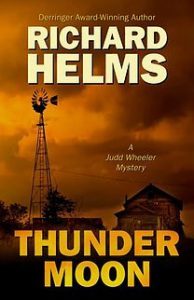 I am one of the Five Star Orphans. About two years ago, Five Star/Cengage decided to shut down its mystery-thriller line of novels. I had published five novels with them, and was just about to send in the fifth title in my New Orleans-based Pat Gallegher series (Paid In Spades), when they announced they were closing the line. It took me a couple of years to find a new publishing home for my novels. About a month ago, I signed a contract with a new house/imprint out of Nashville, TN (Clay Stafford Books) to publish Paid in Spades. It will come out sometime this summer, so we’re deep in the pre-publishing process for it. They also have a collection of my award-winning short stories we’re talking about bringing out. I recently finished the draft of the first title in a new series featuring a Charleston, SC, private eye named Whitlock, which is intended for Clay’s company, so it will need to be rewritten as soon as I finish BRITTLE KARMA (Eamon Gold #3). I hope to send it to Clay by the first of May. Then it will be time to write Novel #24, and then do rewrites on BRITTLE KARMA. Busy busy busy.
I am one of the Five Star Orphans. About two years ago, Five Star/Cengage decided to shut down its mystery-thriller line of novels. I had published five novels with them, and was just about to send in the fifth title in my New Orleans-based Pat Gallegher series (Paid In Spades), when they announced they were closing the line. It took me a couple of years to find a new publishing home for my novels. About a month ago, I signed a contract with a new house/imprint out of Nashville, TN (Clay Stafford Books) to publish Paid in Spades. It will come out sometime this summer, so we’re deep in the pre-publishing process for it. They also have a collection of my award-winning short stories we’re talking about bringing out. I recently finished the draft of the first title in a new series featuring a Charleston, SC, private eye named Whitlock, which is intended for Clay’s company, so it will need to be rewritten as soon as I finish BRITTLE KARMA (Eamon Gold #3). I hope to send it to Clay by the first of May. Then it will be time to write Novel #24, and then do rewrites on BRITTLE KARMA. Busy busy busy.
Over the last couple of years, while I’ve been searching for a new publishing home, I’ve had the luxury of writing at my own pace. Now, it seems the demand is picking up, and I’m going to have to work a little harder to get everything done. At least retirement isn’t boring!
Final words of wisdom:
Same thing I tell everyone who asks: Don’t quit your day job. Writing is a highly rewarding endeavor—spiritually—but, for all but the rarest anointed newbie, it is no way to pay the bills. I was on a panel at Bouchercon several years ago with Robert Randisi and Max Allan Collins—two of the most prolific writers in the business, who both write solely for a living. Writing is their day job. They both said they couldn’t imagine doing anything else for a living. I admire them greatly, but that just wouldn’t work for me. I have been fortunate that I have never had to rely on writing to put food on the table. Still don’t. Between my state pension and Social Security, I haven’t had to touch my retirement savings in almost two years. I don’t have to write to eat. If I did, I think the stress would choke my creativity to death. When I was a college professor, I was too busy to write much during the school year, so I had to cram a novel into the ten or twelve weeks I was off each summer, and do rewrites when the opportunity presented after classes resumed in August. Now, I have the luxury to write every day, and I’m loving it. If I were still working, though, I’m pretty sure I wouldn’t give in to the temptation to quit so I could write full-time. I don’t need that sort of pressure.
The second piece of advice is absolutely necessary to keep you from going crazy. Never attempt to gauge your success as a writer against that of any other writer. That way madness lies. Never allow yourself to envy another writer’s success, book deal, award nomination, film deal, etc. When one writer flourishes, we all flourish. I’ve been very fortunate to receive fourteen major mystery award nominations and three wins. Even so, I have—like every writer—fallow years when it seems that all my friends are getting nominated for awards, or getting multiple book deals, or getting selected from prime anthologies, and I’m getting passed over. No biggie. I am happy for their success and their happiness. I figure I’ve had my good times, and now they’re having theirs, and a year from now our roles might flip again. I’m just enough of an old, burned out, ex-hippie, part-time flake to find joy in the joy of others. It’s a lot more fun to share in someone else’s bliss than it is to sit in the corner and grouse. We all find our level and our niche in this business sooner or later. As my wonderful wife of 34 years often says, “Bloom where you’re planted.”
The final piece of advice is the most important. Some years back, I struck up a friendship with Jeremiah Healy, after he attended a presentation I did at Sleuthfest on psychopaths. We hit it off, and had a number of wonderful conversations over the years. It was Jerry who introduced me to Bob Parker, and both of them provided me with cover blurbs for various novels.
I was at a bar at Killer Nashville several years back with Jerry, and I offered to buy him a drink as partial gratitude for all the help he had provided over the years. He said, “Thanks for the drink, but if you really want to show your appreciation, pay it forward. I did you a favor, now it’s your turn to do one for someone else.”
Jerry believed, as do I, that the writing fraternity is a community. Nobody knows everything, and nobody can do everything. We all need help sometime. It is my belief that we have both the opportunity and the obligation to help one another along on the winding path of this crazy business. I have never refused a request for a cover blurb, and I hope I never will. I have never told an author asking for help with psychological issues in a book that I was too busy, and I hope I never will. The writing business has been very, very good to me—perhaps not in monetary terms, but the relationships and experiences and personal satisfaction I’ve enjoyed over the last twenty years in this business are priceless. I am very careful to stop frequently and give thanks for the rewards writing has bestowed, and to do what I can to pay it forward. I like to think that I’m making deposits in the karma bank, and that the things I do to help my fellow writers will come back to me in time.
Thanks bunches for asking me to contribute to your blog! It’s been a blast—but now I have to get back to work. I still have a lot of words to write before I fade away!
So great to have you here! What a wealth of experience (and practicality!!) you bring to your business. Thanks for hanging out with us!
The post Richard Helms: Award Winning Mystery Author Chats about Writing appeared first on Elena Hartwell.
February 17, 2018
Award Winning Author Bryan E. Robinson on the Perfect Writing Space
So happy to have award winning author Bryan E. Robinson as a guest blogger this week. He’s 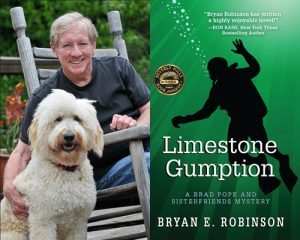 here to help all of us improve our writing space and increase our creativity.
here to help all of us improve our writing space and increase our creativity.
You can find Bryan on Twitter & Facebook & his website
Thank you for visiting with us Bryan!
THE AUTHOR
Bryan E. Robinson is a psychotherapist and the author of two novels and thirty-seven self-help and psychology books. His work has been translated into thirteen languages. His latest work, Daily Writing Resilience: 365 Meditations & Inspirations for Writers launched January 8.
His mystery Limestone Gumption won multiple awards and his latest thriller, BLOODY BONES, was a finalist for Killer Nashville’s Claymore Award. Bryan is also known for his groundbreaking exploration on work addiction and work/life balance, including his bestselling book, Chained to the Desk.

THE BLOG
Solve the Mystery to Personalizing Your Writing Space
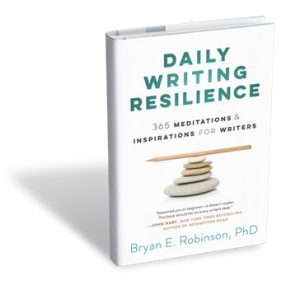 After I wrote my first mystery, Limestone Gumption then penned my latest, Daily Writing Resiliance: 365 Meditations & Inspirations for Writers, I developed an inventory to measure my personalized work area and realized it needed a touch up. I de-cluttered my desk and created noise buffers from my three barking Golden Doodles. The changes enabled me to write my second novel, BLOODY BONES, in a much shorter amount of time.
After I wrote my first mystery, Limestone Gumption then penned my latest, Daily Writing Resiliance: 365 Meditations & Inspirations for Writers, I developed an inventory to measure my personalized work area and realized it needed a touch up. I de-cluttered my desk and created noise buffers from my three barking Golden Doodles. The changes enabled me to write my second novel, BLOODY BONES, in a much shorter amount of time.
While safe environments are crucial for good quality 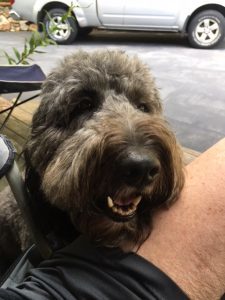 writing, there is no one-size-fits-all solution. Each of us writers has to determine what type of surroundings work best then personalize a space that fosters our creative flow. Under deadlines a safe workstation can ease stress, help us stay calm, and improve creative output.
writing, there is no one-size-fits-all solution. Each of us writers has to determine what type of surroundings work best then personalize a space that fosters our creative flow. Under deadlines a safe workstation can ease stress, help us stay calm, and improve creative output.
Some authors prefer a little “comfort clutter” and disorganization to offset a museum-like atmosphere. Others might be neat freaks and more at ease with organized, tidy, and streamlined areas.
Some writers need space that requires inspiration from natural surroundings. D. H. Lawrence said writing outside when the weather was nice made him feel “safe and remote.” On the flipside Dean Koontz said he knows he’s a potential slacker so he doesn’t tempt himself with beach views: “I have a sofa on which I never nap, big windows with an ocean view that I rarely see, because I keep the pleated shades down at all times while working.”
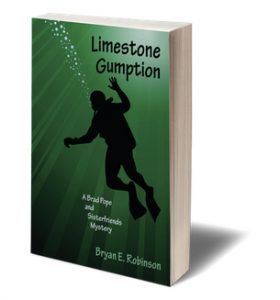 To avoid distractions, some novelists prefer to write outside the home. John Hart wrote his first books at the public library. Harlan Coben said, “My house has too many distractions. There’s the email. There’s checking my Amazon ranking. I know I’m the only author who’s ever done that, ever. There’s the fax. I like to go out and write.”
To avoid distractions, some novelists prefer to write outside the home. John Hart wrote his first books at the public library. Harlan Coben said, “My house has too many distractions. There’s the email. There’s checking my Amazon ranking. I know I’m the only author who’s ever done that, ever. There’s the fax. I like to go out and write.”
For those of us with home offices, appointing workstations with personalized items—such as scented candles, appealing paint colors, vacation memorabilia, photos of children and spouses, dogs and friends—can warm weary hearts and lift writing spirits. Regardless of what kind of writing space works for you, here’s the bottom line: Personalize you writing space so you have a safe environment or one away from home that attracts your five senses in a totally different way from the sensory experience you associate with daily pressures.
Okay, let’s solve the mystery. For starters, inventory your writing space. Notice if your surroundings contain the three S’s necessary for creative flow: Safe, Soothing, and Stress-free. Rate where the needle falls on a scale from 1 to 2 (Bad); 3 (Mediocre); 4 to 5 (Good) on the following criteria:
Environmental conditions (noise, air pollutants, temperature)
Organization (clutter, storage, tidiness)
Physical room arrangement (placement of work tools, computer, furniture, views)
Sensory Comfort (room color, music or nature sounds, scented candles)
A touch of nature (plants, fish bowl, small waterfall)
Lighting (natural sunlight versus artificial light, dim or well lit)
You can sum your 6 scores into an overall score: 6-12 (Red Light. Needs a major touch up); 13-19 (Yellow Light. Maybe some light touches); and 20-30 (Green Light. You’re in tip-top shape).
 As I did, you, too, can devise a plan to raise your needle from a 1 or 2 on each condition to a 4 or 5, depending on the conditions that are Safe, Soothing, and Stress-free. For example, suppose natural settings fuel your creative flow, and you rate room arrangement a 2 because you have a sofa blocking a large window with a wooded view and a bird feeder.
As I did, you, too, can devise a plan to raise your needle from a 1 or 2 on each condition to a 4 or 5, depending on the conditions that are Safe, Soothing, and Stress-free. For example, suppose natural settings fuel your creative flow, and you rate room arrangement a 2 because you have a sofa blocking a large window with a wooded view and a bird feeder.
Part of your plan might be to reposition the sofa so that the view brings more nature into your personal space and raises your needle to a 4.
I am convinced that there’s a link between good writing and a safe, soothing, stress-free writing environment. After taking the inventory, see if your workstation needs a touch up then give it one and watch your writing soar.

I know we’ll all rest easy once we get our environment just the way we like it!
The post Award Winning Author Bryan E. Robinson on the Perfect Writing Space appeared first on Elena Hartwell.
February 11, 2018
Dru Ann Love on Reading, Quilting, and Poetry
Everyone who reads mysteries should be visiting dru’s book musings, a fantastic blog about books, authors, and characters. This week I’m hanging out with the woman behind the blog, the one and only Dru Ann Love!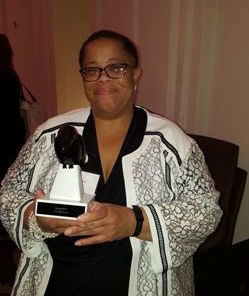
Dru Ann Love spends her non-working hours behind the scenes on her blog, dru’s book musings and her working hours at the daytime situation where she is a research professional. Dru Ann is an avid reader who writes poetry, creates quilts and is happy to be in “her element” within the mystery community. Dru Ann is a 2017 MWA Raven Award recipient and dru’s book musings is an Anthony Award-nominated blog.
(Photo by Catriona McPherson)
The Interview …
You have an amazing blog for readers and writers in the mystery genre. Between book reviews, a Day in the Life of a Character, showcases, and everything else you do, you bring attention to thousands of books and authors. What prompted you to start your blog?
First, thank you. (You’re welcome!)
My blog started out as a reading journal, however, the blog that you see today was prompted because I had learned that in order to keep readers coming to your blog, you needed to have fresh content at least 3-5 days a week. One day after I had finished reading and the crime was solved, a thought came into my head . . . what is a typical day for the character when they are not solving a murder. And that is how a “Day In The Life” feature came into being. And I always thank Nora McFarland and Misa Ramirez who upon sending a cold request, immediately agreed to do a guest post for this new feature.
What is most important to you as a reader, a compelling character or an engaging plot? Or are they equally important?
They are equally important as they play off one another. The plot will drive the character as the character will drive the plot to bring you a story that you will want to see how it ends. That is why character development is so important, especially in a series.
It all started with Encyclopedia Brown …
What books did you read growing up? When did you start reading mysteries?
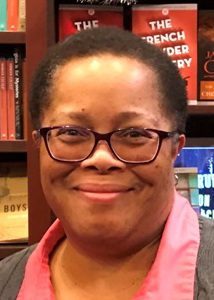 I read all kinds of books and magazines growing up. The first book I remember reading is Dick and Jane from school. The first mystery book that I remember reading is Encyclopedia Brown which was part of the Scholastic Reading program.
I read all kinds of books and magazines growing up. The first book I remember reading is Dick and Jane from school. The first mystery book that I remember reading is Encyclopedia Brown which was part of the Scholastic Reading program.
What’s your favorite way to read? Hardback? e-book? paperback? Do you have a favorite spot to read?
I prefer e-books as my vision is not what it used to be and with carpal tunnel makes it harder to hold a book comfortably. My favorite spot to read is my living room either at the computer desk or on the couch.
You also write poetry and quilt – are you up for sharing a poem and a photo of a quilt?
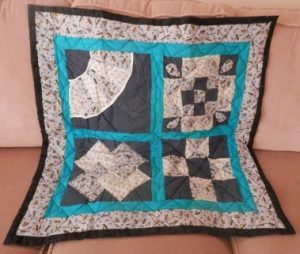
BEAUTIFUL SOULS
Black is a color
of only a shade.
There are so many
that we cannot name.
There is cinnamon,
honey, coffee and cream.
Butter, chocolate are
only a dream.
There is more to this
but won’t say no.
The beautiful colors
of beautiful souls.
Thank you! These are gorgeous …
What’s your favorite way to find new books?
I scour Amazon – I love their “Customers who bought this item also bought” feature. I also visit Stop, You’re Killing Me! and the Cozy Mystery List blogs, as well as mentions on social media and newsletters.
For those of you who want to become reviewers….
Words of Wisdom for Book Reviewers:
Be honest. Be kind. Be respectful. (Great advice for everyone! Thanks for visiting Dru Ann – see you soon)
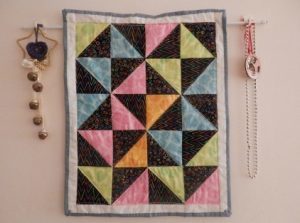
The post Dru Ann Love on Reading, Quilting, and Poetry appeared first on Elena Hartwell.
February 4, 2018
Prison to Print: Author James L’Etoile
This week I’m thrilled to be joined by author James L’Etoile.
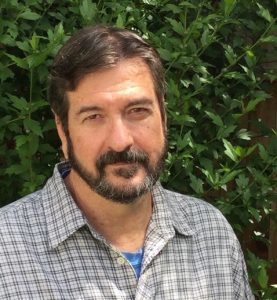
James L’Etoile’s crime fiction work is recognized by the Creative World Awards, Acclaim Film, the Scriptapalooza Television Script Competition, Killer Nashville Reader’s Choice, and The American Book Festival Awards. At What Cost was released by Crooked Lane Books in 2016 and Bury The Past (a 2017 Best Book Award finalist in the mystery/suspense category) was published on December 12, 2017.
James L’Etoile worked in prisons and jails for twenty-nine years before turning to crime fiction. He is an experienced correctional administrator, facility captain, associate warden, chief of institution operations, and director of state parole. He draws upon his experience to bring his crime fiction to life. He consults in prisons, jails and community corrections across the country and when he isn’t writing, he and his wife, Ann-Marie participate in therapy dog programs for seniors in memory care and Read To A Dog children’s reading programs.
THE INTERVIEW
Some writers learn craft, then research content. Others have careers in different fields, making them experts in content, but then have to learn craft. You worked in the criminal justice system for over twenty years before becoming a novelist, so you’re an expert on content to write a police procedural/thriller. How did you learn about the craft of writing?
Looking back, I believe I started to learn the craft aspects of writing early in my career while working as a probation officer. I wrote presentence investigation reports, pulling in information from police reports, victim statements, defendant interviews, and other sources. You’d have to draft these complex and detailed reports in a short amount of time. The presiding judges were particular in their expectations and you’ve never experienced a critic of your written work like a defense attorney of the man you’ve just recommended go off to state prison for fifty years.
When it looked like I was going to make the transition from prison to the page, I attended workshops and conferences, learning more about structure, pacing and character development. But those experiences in prison, parole and probation were the lens I filtered this new information through for context.
“…you’ve never experienced a critic of your written work like a defense attorney of the man you’ve just recommended go off to state prison for fifty years.”
Reading played an important part in developing my writing toolbox. While I still read for enjoyment, I’m taking a close look at character, plot development and dialogue—what works well and what didn’t. I’m always learning.
Tell us about your road to publication:
When I finished my first novel, I sent out the query letters and waited—and waited. 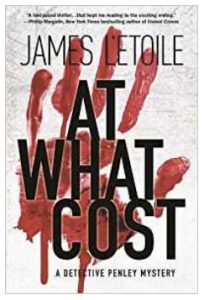 I received a few requests for partials and fulls, but ultimately, a trail of rejections. Like most new writers, I took it personally. It stung. A few months later, for some reason, I picked up the manuscript and read it. I was horrified. The damn thing was awful and my first reaction was to send out an apology postcard to everyone who suffered through a read.
I received a few requests for partials and fulls, but ultimately, a trail of rejections. Like most new writers, I took it personally. It stung. A few months later, for some reason, I picked up the manuscript and read it. I was horrified. The damn thing was awful and my first reaction was to send out an apology postcard to everyone who suffered through a read.
After the shock went away, I realized what I’d sent out was basically a clean first draft, badly in need of revision and rewriting. I put that manuscript in my bottom drawer—never to see the light of day. Every so often, I’ll drag it out as a reminder of how far I’ve come. The next time around, months of rewriting turned out a book that could stand on its own.
Fast-forward a couple of years and I pitched another book to an agent I met at a mystery writers conference. I was really impressed with Elizabeth Kracht, of Kimberley Cameron and Associates, from her panel presentation on the author-agent relationship. She liked the concept and told me to send it to her. A couple of months of back and forth, rewriting passages she identified as needing something more, and the book was in great shape. Liz did all this collaboration with me before she took me on as one of her clients. With her guidance (Which I’ve come to trust and rely upon completely) she sold the manuscript to a publishing house and leveraged a two-book deal. At What Cost and Bury the Past were born.
Your characters feel very real, both the cops and the criminals. How much did you find yourself dramatizing events to make it pop on the page? Did you find you had to speed up events? Or exaggerate character? Or is what we read on the page how you have experienced crime and investigation in the real world?
I glad you get the sense that the characters are realistic. I’ve really tried to bring that aspect of the stories to the forefront. The personalities and traits aren’t exaggerated, but they are an amalgam of different people I encountered in the criminal justice system—on both sides of the bars. I used actual conversations with gang members in At What Cost and some of the dialogue in Bury the Past comes from interaction with police and parole staff.
With crime fiction, especially stories with a procedural element, I do find the need to speed up events to keep the pace of the story where it needs to be. Actual procedures can bore the bark off of a tree and would be a sure way to get a reader to toss the book across the room. Readers don’t need to know how staff line up for a cell extraction, or the number of twists in a gun barrel. Elmore Leonard said it best, “When you write, try to leave out all the parts readers skip.”
“Actual procedures can bore the bark off of a tree and would be a sure way to get a reader to toss the book across the room.”
Your two detectives are very distinct as characters, what’s your favorite attribute of both John Penley and Paula Newberry? Anything that drives you nuts about either of them?
John Penley and Paula Newberry are about as opposite as you can get. John is a by-the-book kind of guy unless you threaten his family or his sense of what’s right. He’s not one of the Good Ol’ Boy’s Club guys that every department seems to have and he tries to stay out of the politics of policing. He’s seen the toll crime takes on everyone involved—the victim’s families and the cops who respond to crime scenes.
Paula is a kick to write. She’s so unreserved and says what she feels, even when she shouldn’t. Paula is a smart, motivated cop who doesn’t put up with much crap from anyone who gets in her way. This often puts her in a bad situation—politically, or in danger out on the street. She’s had to work twice as hard as her male counterparts to get the recognition and assignments she’s earned. Paula is slow to trust and quick to love, and that will get her in trouble (in a future story—hint).
I’ve always loved Norman Maclean’s observation that there are moments of beauty for those who work that can never be seen by those on the outside. What are the moments of beauty within the justice system? What is something those of us on the outside never see?
Beauty is hard to find in prison. In a maximum-security prison where most of the population is serving life sentences, hope and beauty are hard to find. Fear and anger are palpable and a faint cry from a cell down the tier is more common than you’d think. But, I’ve found beauty in small moments—like those days when I didn’t get feces thrown my way, or no one got stabbed during yard recall, and when all my colleagues got to go home safe after their shift.
I have seen stories of redemption and when they are real—that is a thing of beauty. A hard-core, drug-using, gang-banger getting out and changing his life around is a thing of beauty.
“Fear and anger are palpable and a faint cry from a cell down the tier is more common than you’d think.”
What are you working on now?
I have a couple of projects coming to conclusion—all three are standalone novels, separate and apart from the Detective Penley series. I’ve outlined the third book in that series and I’m ready to start writing. I’m also playing with a nonfiction project, a true-crime story, which kind of brings me back full circle to my probation officer days.
Final words of wisdom:
I’m going to steal something I heard Michael Connelly say at a conference because it really resonated with me. “Write the kind of story that you’d want to read. Because if you like it, chances are others will too.”
I’d also add that writing and getting that work published is a long, torturous process. There are no shortcuts. You have to do the work and write, write, write.
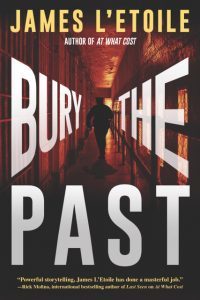
BURY THE PAST continues the pairing of detectives John Penley and Paula Newberry as they investigate a homicide where the evidence reveals their prime suspect–a man already in prison. He has the ultimate alibi. The case takes an unexpected turn for detective Newberry when a case from her past resurfaces and puts her in the killer’s crosshairs.
“[A] tight sequel to 2016’s At What Cost, L’Etoile, a former associate prison warden, keeps the suspense high while illuminating the culture of criminals and the ties that bind cops.” —Publishers Weekly
“Hugely entertaining thriller … shrewdly plotted.” — Booklist
“L’Etoile … vividly evokes the chaotic license to kill that pervasive official corruption releases.” —Kirkus
“L’Etoile’s authentic tone and snappy dialog keep the pace sprinting along here. This is one for fans of Karin Slaughter, especially those who enjoy her Will Trent books. —IndiePicks Magazine
BURY THE PAST selected as an Award Finalist in the 2017 American Books Awards, Thriller/Adventure category.
The post Prison to Print: Author James L’Etoile appeared first on Elena Hartwell.
January 28, 2018
Lori Rader-Day: Award Winning Author—On Writing
This week’s interview is with author Lori Rader-Day. She writes with a strong, unique voice, and having a little insight into her writing process was something I’ve wanted to learn about for a long time. Welcome, Lori….
The Author
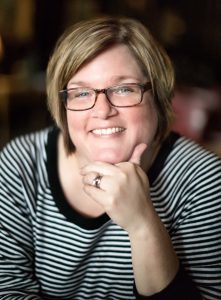
Lori Rader-Day’s debut mystery, The Black Hour, won the 2015 Anthony Award for Best First Novel and was a finalist for the 2015 Mary Higgins Clark Award. Her second novel, Little Pretty Things, won the 2016 Mary Higgins Clark Award and was a nominee for the Anthony Award for Best Paperback Original. Little Pretty Things was named a 2015 “most arresting crime novel” by Kirkus Reviews and one of the top ten crime novels of the year by Booklist.
Her third novel, The Day I Died, was an Indie Next Pick and is a nominee for the Mary Higgins Clark Award and the Barry Award. She lives in Chicago.
You can find also find Lori on Facebook and Twitter
The Interview
Your work explores not just acts of violence but also human psychology and relationships. What do you find most interesting or challenging about creating complex characters?
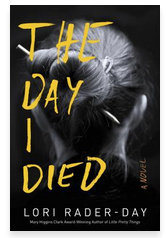
What I like when I’m reading someone else’s books is to enter into a character’s life and feel like I’ve just stumbled into a lived life. So when I’m writing, that’s also what I want to create, the sense that these people are real people, that there’s a lot to learn about them, and not all in chapter one. What I find interesting about the process is that I don’t usually know everything about them in chapter one. I have to write the book to learn the full story, and then I might have to go back and revise the early pages to make sure it’s set up for the reader to learn and enjoy. That’s the fun part for me: discovery, over time, and then making sure it’s written so that the reader gets the discovery, too.
“I have to market each book separately, but then that’s not exactly a con—it’s an opportunity…”
In an era of mystery series, you’ve written three successful standalones. What do you feel are the pros and cons of standalone novels?
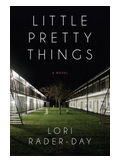
The main pro to writing standalones is that I like standalones. I also think there’s some benefit to the writer in terms of getting a clean slate, not being tied to canon as you progress in your storytelling skills, getting the chance to marry up story with a particular character instead of having to hew to the certain character you’ve got a three-book deal to keep writing about.
Standalones have benefits for the *author,* it seems to me. I think mystery series benefit a great deal in terms of marketing and in building a loyal readership that loves to know what happens next to characters they already enjoy. I have to market each book separately, but then that’s not exactly a con—it’s an opportunity. I’d like to have a series someday, when I meet a character I want to spend that much time with.
Your work has been described as literary, thriller, psychological suspense, and mystery (and compelling, absorbing, and page-turning). What do you believe has had the most impact on the development of your voice as a writer?
The subgenre terms are just marketing terms, and sometimes there aren’t distinct lines between them. Nobody knows what to call what I write, apparently. I’ll take “compelling” or “page-turning” over any marketing term. When I was studying writing, I was writing “literary,” the genre of MFA programs, but when I started writing something longer than a short story, a crime story emerged, and my voice began to come together. I can only assume that I’d gotten out the early ya-yas of imitation at some point and started writing as myself. So finding your own voice is a matter of writing a lot, experimenting, reading, finding the books that inspire your own ideas, and then writing the stories that speak to you. Stop trying to be X author and tell yourself the story you want to tell.
“A friend of mine from high school published a book and I realized—oh, this is a thing you can do….”
Tell us about your road to publication.
I wrote most of my life off and on and then a lot off, until a friend of mine from high school published a book and I realized—oh, this is a thing you can do, if you work at it. So I worked at it, earned a master of fine arts in creative writing for three years just to buy myself the focus and time and audience, and then wrote during lunch hours and vacations from my day job for two-plus more years before I had a book manuscript I thought might be good enough to get published. That was The Black Hour, which got me my agent and my first contract. It was published in 2014. This is the shortest telling of that story I can manage, but the important part is that it took longer than I hoped, left a failed manuscript in the drawer, and was something I worked at, daily, for a good amount of time.
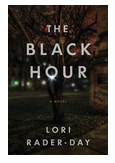 I wished the whole time that someone would just magic me toward the life I wanted, but I didn’t wait around for that—I used the time I had, which was sometimes not very much at all. The interesting thing about this story is that the book I wrote was only possible because of the timing of when I wrote it, the person I was by the time I attempted it. If I’d rushed into publication earlier, as we all *want to,* that book wouldn’t have been what it was. My second book, Little Pretty Things, was published in 2015. After a full re-write and a little delay, The Day I Died was published in 2017; this was the formerly failed manuscript from the drawer. (Side note: never throw any words away. Just tuck them into the archives.) So again, circumstances weren’t what we all hope for, best case scenario, and yet, it all worked out. The road was pretty curvy, is all I’m saying, but it goes to the same place.
I wished the whole time that someone would just magic me toward the life I wanted, but I didn’t wait around for that—I used the time I had, which was sometimes not very much at all. The interesting thing about this story is that the book I wrote was only possible because of the timing of when I wrote it, the person I was by the time I attempted it. If I’d rushed into publication earlier, as we all *want to,* that book wouldn’t have been what it was. My second book, Little Pretty Things, was published in 2015. After a full re-write and a little delay, The Day I Died was published in 2017; this was the formerly failed manuscript from the drawer. (Side note: never throw any words away. Just tuck them into the archives.) So again, circumstances weren’t what we all hope for, best case scenario, and yet, it all worked out. The road was pretty curvy, is all I’m saying, but it goes to the same place.
“Write the stories you want to read…”
With three award winning novels as the foundation for your writing career, what advice would you give new authors about how to find their way in this profession?
Write the stories you want to read. The awards are not under your control; most of publishing isn’t under your control. But if you write stories that please yourself, you’re likely to also write stories that will please other readers. Up-and-coming writers should also look for other writers. Find or start a writers group and definitely find writing associations for people who write what you write. In mystery, that’s Mystery Writers of America and Sisters in Crime (sisters and misters can join this group). Then get involved; this is on-the-job interning into the life of a writer.
What are you working on now?
The final edits are in for Under a Dark Sky, which will be published by Harper Collins William Morrow in the summer. That’s a sort of modern locked-room mystery set in a Michigan dark sky park, where people go to look at the night sky as nature intended. I’m also now drafting what will be my fifth book, and it’s early days there. Too early to talk about.
Final Words of Wisdom:
Write, read, write some more. When you’re starting out, it’s easy to get caught up in the idea of marketing and sales and agents and pitching. But none of that will be of any use to you if the book isn’t written first, and written well.
Great advice, Lori. Thanks for visiting.
The post Lori Rader-Day: Award Winning Author—On Writing appeared first on Elena Hartwell.
January 20, 2018
Catherine Bruns: Bestselling Author on Publishing
This week I’m very happy to have USA Today Bestselling Author Catherine Bruns join me. Welcome Catherine!
Catherine is the author of nine bestselling cozy mysteries, including her most recent, Silenced By Sugar, which launched January 16.
Bonus! If you purchase a copy of Silenced By Sugar, you can get a copy of her short story, Formals, Fortune Cookies & Fraud through Instafreebie, click the link here.
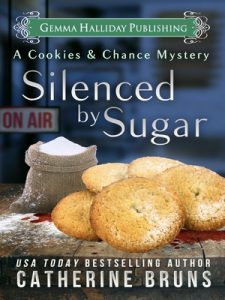 Catherine has lived in Upstate New York her entire life. Her brood consists
Catherine has lived in Upstate New York her entire life. Her brood consists
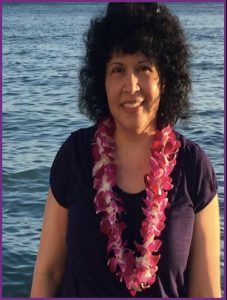 of a male dominated
household: husband, three sons, and several cats and dogs. She hold a B.A. in English and Performing Arts and is a former newspaper reporter and press release writer.
of a male dominated
household: husband, three sons, and several cats and dogs. She hold a B.A. in English and Performing Arts and is a former newspaper reporter and press release writer.
When she’s not writing and has spare time, she enjoy traveling, shopping, and of course, a good book.
She loves to hear from readers. Please feel free to connect with her on Facebook, Twitter, send her an email at catherinebruns@outlook.com or leave a message on her blog!
You have had a number of books released in a very short time, what’s your secret?
I’ve wanted to be a writer since I was eight years old. After I graduated from college, real life took over and I ended up procrastinating for over 20 years until writing my first novel. I think that this is my strange way of attempting to catch up! It’s funny how something I spent so many years avoiding is now a permanent part of my life. If I go a couple of days without writing, it feels like an important piece of me is missing. I just can’t imagine doing anything else and wouldn’t want to.
Your work combines some of my favorite things: food, Hawaii, and quirky characters. How did these things all come together for you as a writer?
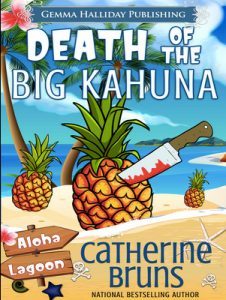 I really enjoy writing culinary mysteries. I have two series currently out, the Cookies & Chance books about a young woman who runs a bakery in Buffalo, and the Carrie Jorgenson mysteries, part of the Aloha Lagoon multi-author series which features a young waitress in Kauai. I have high hopes that there will be a third culinary series releasing in the next year or so!
I really enjoy writing culinary mysteries. I have two series currently out, the Cookies & Chance books about a young woman who runs a bakery in Buffalo, and the Carrie Jorgenson mysteries, part of the Aloha Lagoon multi-author series which features a young waitress in Kauai. I have high hopes that there will be a third culinary series releasing in the next year or so!
I love the fact that one of my series is set in Hawaii since I’ve been there twice and adore everything about the island. If I’m going to write about a certain place, I need to have visited it first. As for quirky characters, culinary or not, all of my books have them and I believe that they always add something integral to the storyline.
Tell us about your road to publication:


